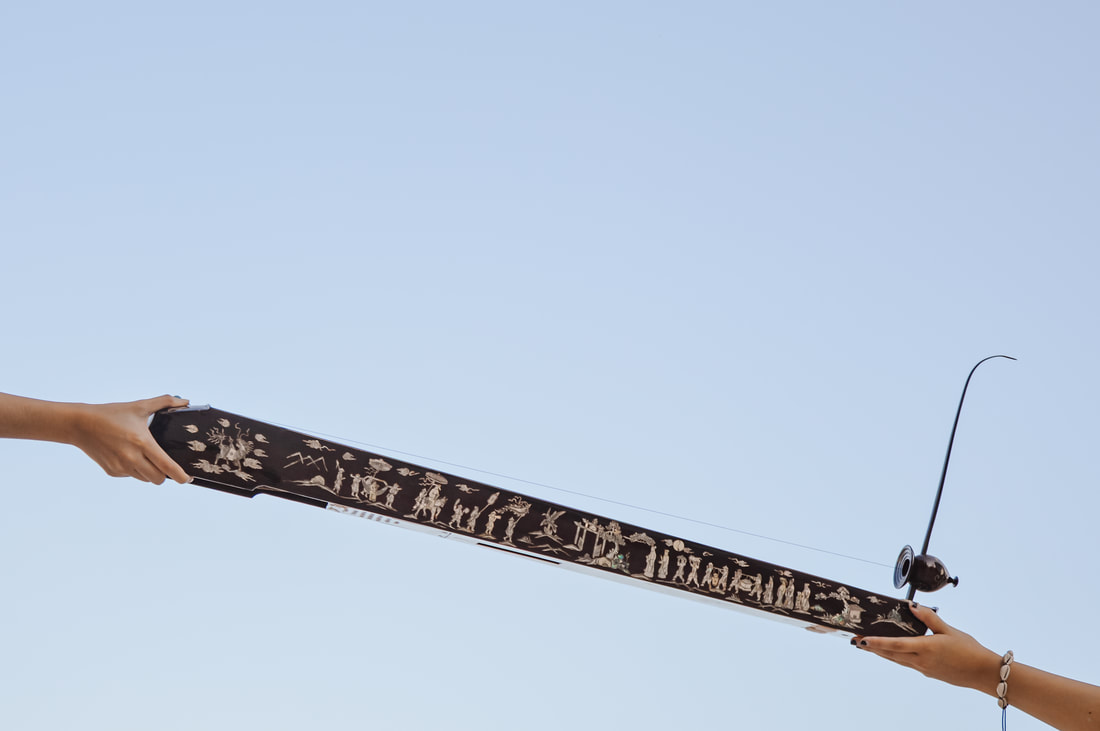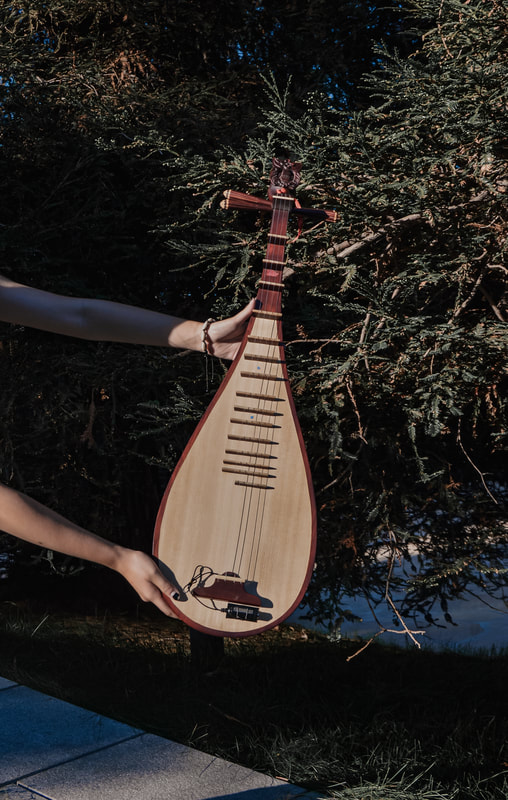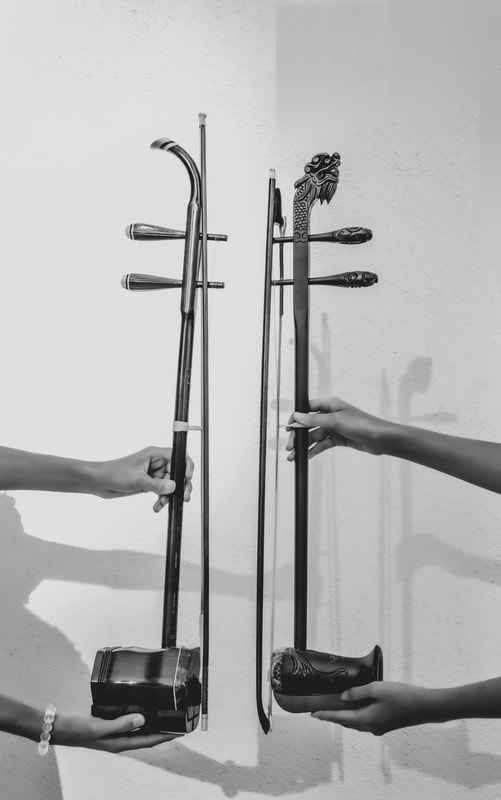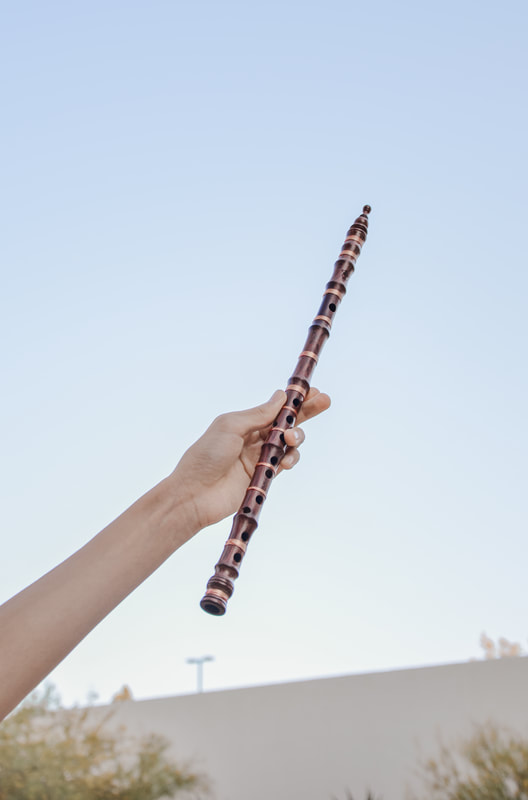Instruments of Vietnam
String Instruments
|
The đàn bầu is a stringed monochord zither. Its base is made up of a long body with a string that attaches from a tuning screw and passes through to a small wooden funnel resembling a gourd, then connects to a curved stalk made of buffalo horn. This curved stalk is bent by the left hand to alter the pitch of the note being played. The right hand plucks the string with a pick while using the back of the hand to create a harmonic. This technique allows for the instrument to play different notes and tones, despite only having one string. In modern times, the đàn bầu is played with an amplifier to carry the sound across.
|
|
PercussionThere are many instruments in the percussion family, including the phách tiền (coin clappers) trống đại, trống lễ and trống đế (large, medium, and small drums), trống cơm (rice drum), sông lan (castanets), mỏ (wooden beatkeeper), and chiêng (gongs).
|
Wind Instruments
|







